
Jögge Sundqvist works with hand tools in the self-sufficient Scandinavian slöjd tradition, making stools, chairs, cupboards, knives, spoons and sculptures painted with oil color. “Not uncrafty” is his motto. He’s also a teacher, performer, musician and author of several books. An English translation of his book “Slöjd in Wood” is available from Lost Art Press, and an English translation of his latest book, “Karvsnitt,” is forthcoming. Jögge’s father, Wille Sundqvist (1925-2018), was a prominent figure in the green woodworking movement.
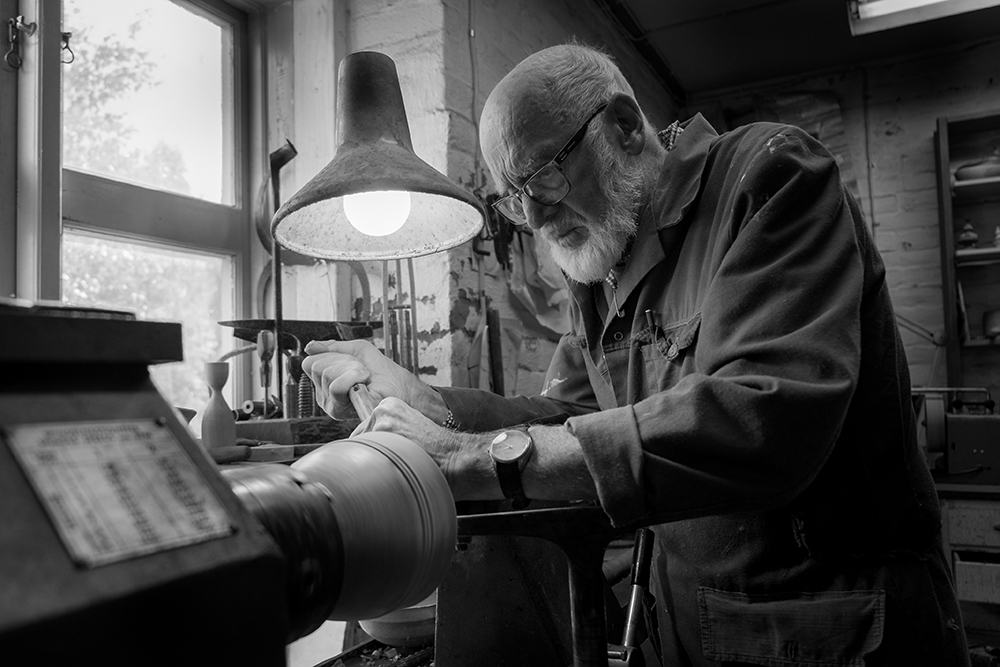
“There was never a word about how I was going to be the one to take care of the tradition,” Jögge says. “Never. My father, I think he just wanted to share the joy, how to form things in a beautiful way, how easy it is to use an axe and use a knife. He was a good teacher and he was very eager to teach. But sometimes, when I was younger, once in a while I’d say, ‘Stop! I want to try myself! Don’t tell me everything!’ He was a trained furniture maker from Carl Malmsten’s Verkstadsskola, so he had his ways. But despite that, he was encouraging.”
Jögge grew up in Luleå, Sweden, where at that time his father was teaching kids in slöjd.
“In Sweden, slöjd is still something that every student has to learn,” Jögge says. “They have to learn how to use materials such as wood and textiles, and the techniques that go with it. Today I wouldn’t call it slöjd because I have another definition of it. But still, it’s a practical way to teach children how to use their hands.”
Otto Salomon (1849-1907), was an advocate of educational slöjd. “He wrote about how important it was for children to learn practical things, to read a drawing with measurements and stuff like that, especially farmer kids and working kids,” Jögge says. “They needed to have that knowledge to be able to be workers in the industrial revolution.”
Jögge has fond memories of his childhood in Luleå, following his father to the school’s workshops, helping him make things and making his own things.
“We had fun,” he says. “And he was eager to do his own things besides teaching and he helped us do our things too. And I loved that. For one thing, it gave me the confidence that everything could be made by hand.”
Around this time Malmsten, who founded two schools, arranged a workshop with teachers in Luleå where they were tasked to create children’s toys made out of wood.

“It was meant to be a fun workshop where they invented a lot of ideas around woodwork and children’s toys,” Jögge says. “Years ago I saw some slides when I’m 4 years old and I’m sitting on a crocodile on wheels and it has four pieces that are tied together with yarn so it can roll and sway on the ground a little. I’m sitting on it and it’s very roughly axed and carved with gouges and painted with oil colors and kind of sparkling – vivid colors – and I just loved that. And when I saw this picture, something inside me said, ‘Yeah. This must have been an early triggering point there.’ Because I am very attached to folk art and colors. I love powerful designs and rough carved surfaces. That’s why I am into slöjd much more than furniture work. I think it was somewhere there casting an eye over my shoulder – the inspiration started there for me.”
From the Back of a Dragon to a First Knife
Jögge’s childhood was filled with art and slöjd. He remembers his father taking him to a film about Picasso at the age of 10. And he recognizes that the environments he lived in were special.
“My mother was very, very skilled in weaving, felting and nålbindning, which is an old knitting technique,” Jögge says.
His mother was also brilliant with color. Jögge remembers dining room tables filled with color samples and his mother eyeing them all day long, observing them in different light for days on end just to pick the perfect shade of red. It’s something Jögge has found himself doing, mixing and fixing paint for hours, trying to settle on the ideal shade.

“She and my father adapted the Carl Malmsten way of having a home, with handmade things, crafted things,” Jögge says. “The things were fancy and well done, but it wasn’t that we were rich or wealthy. But they were very well designed and carefully made. We lived in a workers’ block, very close to the iron and steel mill in Luleå, not very fancy at all. We had three rooms and a kitchen.”
Jögge and one of his two brothers shared a double-stacked bed in a room that also served as their father’s workshop.


“In their mind, a home should be something very comfortable, functional and cozy and crafted,” he says. “So my father made the shelves and the beds but it was my mother who was the one who had the overall look for making it a home. My father was very oriented in objects but my mother saw how everything should fit together, from the carpets to the windows.”
Wille Sundqvist, Jögge’s father, grew up in a small village outside Bjurholm, with eight siblings. Wille’s father was a farmer who made a special kind of chair from that part of the country and brooms with a natural bent curve and horsetails on the back. On the weekends Wille and his family went to town and sold chairs and brooms for extra income.


“And that is exactly the definition of handicraft in Swedish,” Jögge says. “Because we have the word ‘slöjd’ and then we have the word ‘hemslöjd,’ which is ‘home craft.’ And ‘Hemslöjden’ is the craft movement in Sweden.”
Hemslöjd, Jögge says, is basically a side business for farmers. “When the industrial revolution started you needed money,” he says. “If you were farming you were self-sufficient and you didn’t have any money so you had to make some things in the tradition that you knew. So they made spoons, brooms and baskets and chairs and all kinds of objects in different parts of Sweden and sold it in the cities and they’d buy a steel bucket, for example, because you couldn’t make one yourself but it was obviously much better than a wooden bucket.”

When Jögge was 10 the family moved to Vilhelmina, and his father began working as a craft consultant.
“He was one of three craft consultants in Sweden working for hard materials, wood and metal,” Jögge says. “Before that they had craft consultants for textile work but never before for harder material. So he was kind of a pioneer there, working for the whole county, trying to help mainly farmers who also had a hemslöjd as a side income.”
The craft movement flourished in Sweden in the 1970s and ’80s. As a craft consultant, paid by the government, Wille helped thousands of small farmers get loans from the state, create business plans, design workshops and create sophisticated drawings of everything, from candle holders to cups to butter knives.
Ten-year-old Jögge loved the move to Vilhelmina. “We came from an apartment to a house,” he says. It was 1969 and the town they moved to had about 4,000 people, so everybody knew everybody. As a teenager, Jögge started playing instruments, including the guitar, and he started a band. His life revolved around rock ‘n’ roll and friends.
Jögge’s father was patient. And when Jögge was 15 years old, he asked his father, “Can you show me how to make a knife?”
His father was quietly thrilled.
Wille taught Jögge the importance of finding a good blade, testing several blades out on reindeer antler. The knife was made in parts from reindeer antler and masur, a type of birch, so there’s a special pattern to it. His father showed him how to inlay the silver and sew the sheath.

“It’s great,” Jögge says, holding it while talking. “I use it very, very much. It’s still a favorite.”
The Old Ways of Doing Things
Jögge moved to Umeå in 1978 where he had his own apartment and started to work for the railroad, at Umeå Central Station.
“I started at the tracks,” Jögge says. “When you’re taking apart a train, someone has to stand in between the cars. When the train was disjointed, the cars were pushed off to another train set. When they came in at a speed of up to 20 mph, you had put on the hook when it bumped into the trainset, to put the train together. It’s a very dangerous job. You have to be quick, and you can die if you come between the bumpers.”
Jögge also had a small workshop in a big wardrobe, 3 meters x 2 meters (about 10′ x 6′). Instead of using it for clothes, he built a workbench where he made knives and did some commission work too. In 1982, a friend convinced him to take two years and attend Vindeln, a folk school that specialized in slöjd.
“That totally changed my whole perspective, because we were a group of students who were all dedicated to work in the traditional way,” Jögge says. “We were finding the old ways of doing things by riving wood, splitting wood, following the fiber, using tradition as a woodworking tool. At the time, a lot of people trained in woodworking more like a fine arts craft. But we were dedicated to the old traditional craft, from the 1700s to the 1800s. We had a lot of discussions defining things: Who are we? Why are we doing these things? We had all-night discussions, even arguments. That was the sense of time, and formative to who I am. Beth Moen was in the class above me, and Ramon Persson was another heavy influence. And we were trained in design too – painting, freehand drawing, technical drawing and so on.

“As I look upon it now, I found a way of exploring the tradition from a personal point of view, not my father’s point of view. Because I knew how to make a spoon. I knew how to make a knife. That was pretty common for me. But all of a sudden I had people in my age who were dedicated to what they did and I was able to form my own world which wasn’t my father’s world so I finally had my own choices to make.
“I remember I had been there for a week and I called my dad and I said, ‘Oh, I forgot to tell you, I’m at this school.’ And he said, ‘Wow!’ And he was free-minded by that time. He said, ‘When you’re 18, go out in the world and do whatever you want to do. I care about you but you should feel free to do whatever you want to do. You have to form your own life.’”
By this time Jögge’s parents had divorced, and his mother had moved to Vindeln as well. Jögge lived in her house during the week, and they invited classmates for weekends at his mother’s house, where they had “many wonderful parties and laughs.” His mother was very social and loved young people, Jögge says.
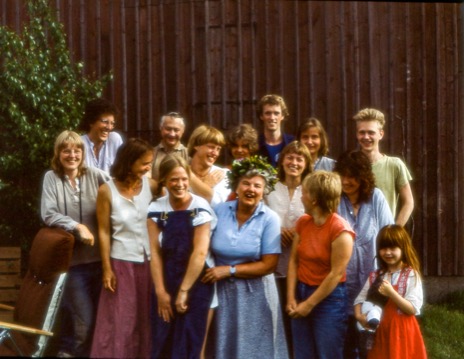
While attending Vindeln Jögge continued to work for the railroad on the weekends, and once done with school he went back to the railroad full-time. Later he worked as a train dispatcher with an office at the station and a platform outside where he’d waved to the train drivers, indicating if it was OK to go or not. In 1985, he asked to work half-time. By then he had his workshop, was playing in a popular rock ‘n’ roll band and owned a record company, Jakaranda Records, recording local bands and putting out records for them.
Traditional Craft & Rock ‘n’Roll
Jögge’s first band was Rockvattnä, named after a village outside of Vilhelmina, which roughly translates to “rocking water.” When Jögge moved to Umeå, he formed another band called Favoritorkestern and later Kapten Nemo.

“We were more of a serious Swedish pop band, heavily influenced by the Beatles, the Who, bands like that, but lyrics in Swedish. Very ’80s like. We were playing all the time. Stockholm too.”

The band had two leads. Jögge played guitar and sang, and they had a bass player who also sang. Both Jögge and the bass player wrote all the songs. They made a maxi single with four songs and a long-playing record. They were on the radio. For two to three years, around 1986 and 1987, they were the biggest band in Umeå.
“It was real fun,” Jögge says. “We had a good time there. In 1992 I finally released a solo record, Människa.”
He continued his traditional craft work, and the combination of rock ‘n’ roll and traditional craft fulfilled him.

“Doing traditional craft on one hand was lovely because the rock ‘n’ roll world is a very on-the-surface world,” he says. “It’s fun! But when I got fed up with the superficial rock ‘n’ roll world I could do craft and make things that lasted forever. But also, playing a gig that exists for a moment in time is exciting, the power and energy which comes out of it. So I had this kind of dialectic relationship with the fluidity of craft and rock ‘n’ roll. And I liked that combination, the interaction between modern life and tradition. I think I am that type of person who wants contrast and a little conflict in order to have balance in my life.”
Although Jögge no longer plays, he’s still, as he says, “totally addicted to good music.” He has more than 5,000 songs on his Spotify playlist, and he always plays music while working.
The rhythm of the music must match the rhythm of his work. When that equivalency occurs, he feels more power while throwing an axe, he says, and experiences more feeling while doing it.
“But when I carved patterns on knives, I tried to play rock ‘n’ roll but it didn’t work,” he says. “So I tried to look for more repetitive music which gave me some kind of fluency while working. And I found Steve Reich. He’s arty, modern, non-vocal, very repetitive. I found music with small patterns, like Philip Glass. And actually, it was Laurie Anderson who brought me there, talking about these people, Talking Heads was very repetitive but still a kind of ambiance. And I did much better working with that kind of music for patterns and chip carving. So a very profound insight was when I realized it must be a connection between music and body and working.”
In 1994, Jögge set up a big multimedia rock concert called Rockhuvud. He acted as producer, project manager, composer and musician. The performance featured a rock ‘n’ roll band, Komeda, and two craftspeople, Beth Moen and Tryggve Persson, live on stage. They toured throughout Sweden, 40 concerts in all.


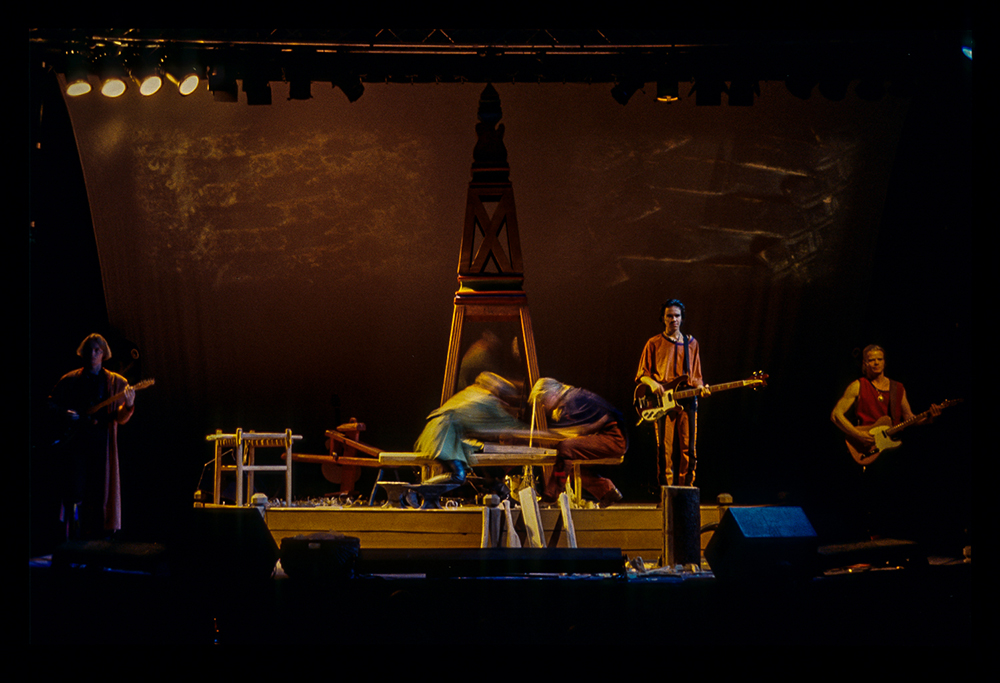
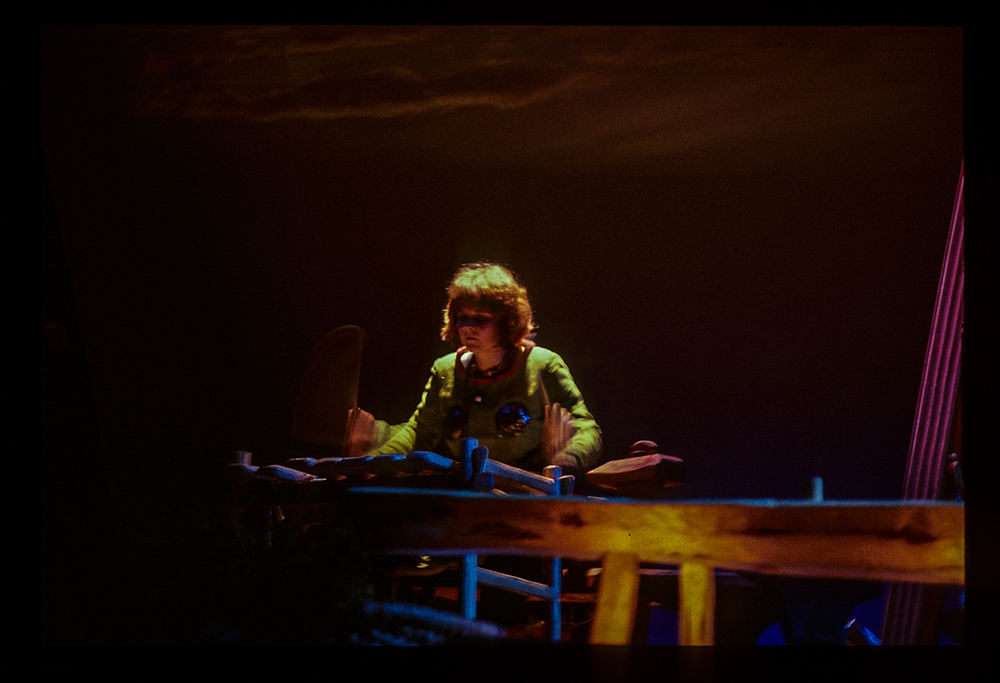
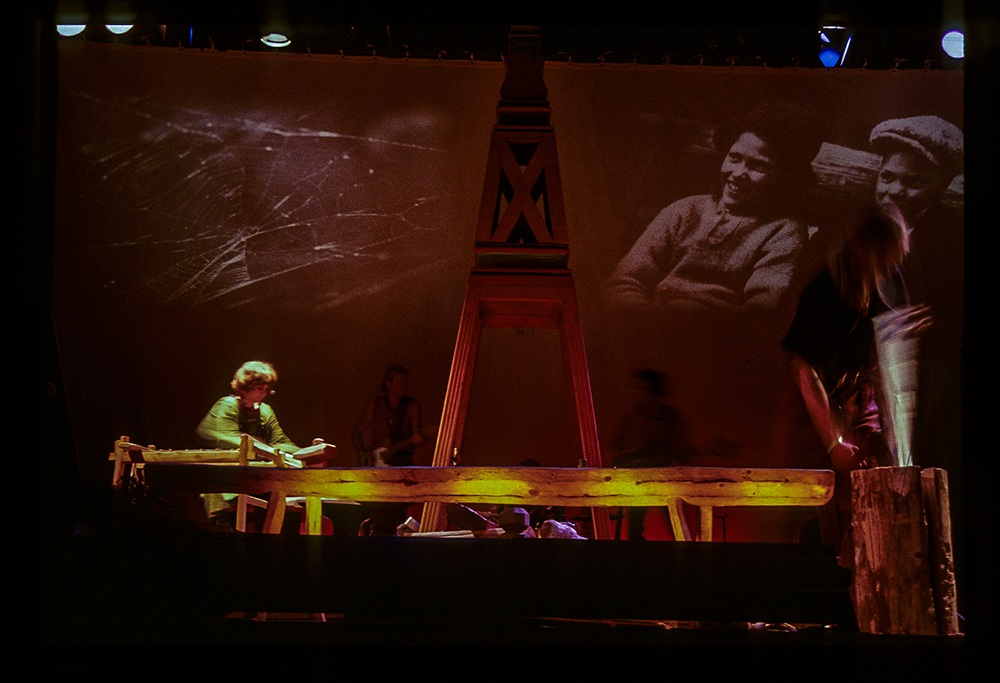
“All the musicians and the craftspeople worked in rhythm, instructed by a choreographer, through this whole concert,” Jögge says. “So it has been a real thread in my work – the body, the rhythm, and the work. It’s hard to explain, but the performance was a way of expressing the power of slöjd, both the physical character of the work and the beauty of the shapes and colors.”
Here he quotes the beat poet Jack Kerouac: “Because I am Beat, I believe in Beatitude and that God so loved the world He gave His only begotten Son to it.”
“I think it has to do with something about flow,” he says. “One of my favorite moments in the workshop is working pretty hard and sweating all over – when form comes naturally and you don’t even think about it. It just comes there, from the tool, from the material, from your skill. It’s a rhythm, a kind of instinct that is created in that moment. And after that you just look at it and say, ‘What have I done?’ I talked with Del Stubbs about this, about the dancing of the hands. Sometimes you can just look at your hands, and they just work themselves. You don’t even think about it. They just work.
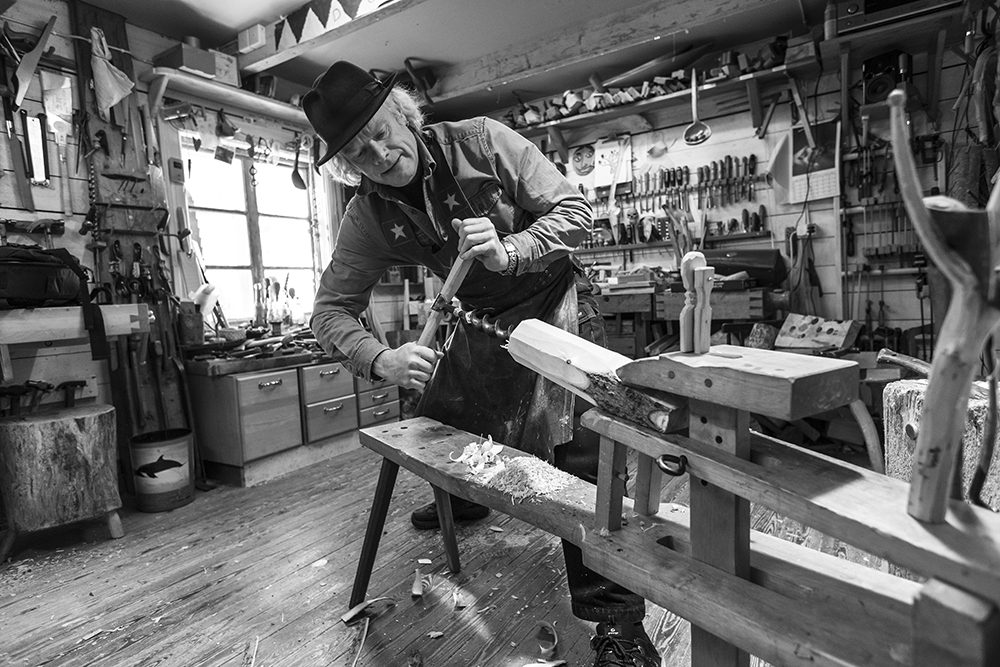
“This is still something that’s true to me. I believe real craft comes from a deeper interaction with your mind and body, obviously with a long knowledge of tradition, materials and technical skill with the tools. When all parts connect and work together, real slöjd comes from my hands.”
Jögge says he realizes now the importance of having one leg in traditional craft and one leg in rock ‘n’ roll, and that both legs contribute to his body functioning in a way that allows the magic of Surolle. (And that’s a story still to come, in part two.)
— Kara Gebhart Uhl

nice job, Kara – I can’t wait for part 2.
Wonderful profile! The stuff about music — Laurie Anderson and Philip Glass (I hope I’m spelling those correctly) is refreshing, the pictures of Jogge over the years are fascinating, and the portrait of young friends with Jogge’s mother is like a modern version of a painting by Carl Larsson.
Robert Pissing (spl?) wrote about this kind of connection in ‘Zen and the art of motorcycle maintenance’. Being part of the process brings the connection to the product. The work and the worker are the same as the result.
Robert M. Pirsig
Thanks for the correct spelling.
Great article and intro to Jogge’s life and work. But I think you got the size of his “wardrobe shop” wrong. It was written as 6 square meters, not as 6 meters square. So more like 8 feet square, not 20 feet square. 20 feet square is the size of many working shops.
Good catch! I reached out to Jögge and it was about 3 meters x 2 meters, so about 10′ x 6′. I’ve updated the text! (And thank you!)
Wonderful article, well done. I look forward to part 2.
Int’ oslög!
Cool! He played a Gibson Trini Lopez special ES-335 in Favoritorkestern
Fascinating individual and profound thoughts about the synergy of mind, body, tradition and skill. I wish our educational systems in the US valued learning to use your hands.
I heartily agree.
Wow. When can I read Part Two?
Sunday, May 29!
Great piece and very deftly woven, Kara! Wonderful dialogue between the brief descriptions and images. Feels like there’s a lot more beneath the surface, and more to come… which is always the best feeling to leave readers with. Looking forward to Part 2!
Thank you!
Dang if he doesn’t look like Mike Siemsen!
Fantastic piece in so many ways!
Thanks, Kara. Beautifully told, as always. Jogge’s enthusiasm is infectious! Looking forward to part two.
Great to hear about your journey Jogge, and more to come!